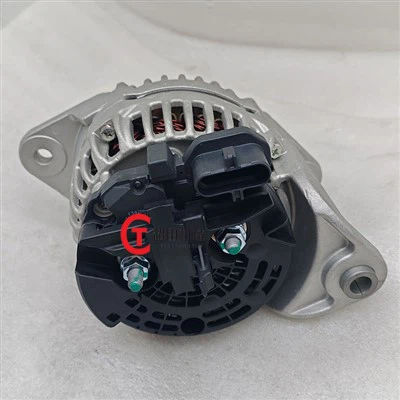Hey there! As a supplier of 10R0782, I've been getting a lot of questions lately about whether this product is suitable for aerospace use. So, I thought I'd take some time to dive into this topic and share my thoughts with you all.
First off, let's talk a bit about what 10R0782 is. It's a high - performance component that's known for its durability and reliability in various industrial applications. It has a robust design that can withstand harsh conditions, which might make you think it could be a good fit for aerospace.
Key Features of 10R0782
One of the main features of 10R0782 is its excellent heat resistance. In aerospace, components are often exposed to extreme temperatures, especially during takeoff, flight, and re - entry (in the case of space vehicles). The 10R0782 is made from materials that can handle high - heat environments without significant degradation. This means it can maintain its structural integrity and performance even when things get hot.
Another great thing about 10R0782 is its precision engineering. Aerospace applications demand components that are extremely accurate. The 10R0782 is manufactured to very tight tolerances, ensuring that it fits perfectly into the systems where it's installed. This precision is crucial for the smooth operation of aerospace equipment, as even the slightest misalignment can lead to serious problems.
Challenges in Aerospace Applications
However, just having good features isn't always enough for aerospace use. There are some unique challenges in the aerospace industry that we need to consider.
For starters, weight is a huge factor in aerospace. Every extra pound adds to the fuel consumption and reduces the overall efficiency of the aircraft or spacecraft. While 10R0782 is durable, it might be a bit on the heavy side compared to some specialized aerospace components. We need to look at ways to optimize its design to reduce weight without sacrificing its performance.
Aerospace also has extremely strict safety and regulatory requirements. Before any component can be used in aerospace, it has to go through a series of rigorous tests and certifications. These tests ensure that the component can perform under all possible conditions and meet the high - safety standards of the industry. We'd need to invest a significant amount of time and resources to get 10R0782 certified for aerospace use.


Comparing with Similar Aerospace Components
Let's take a look at some other components used in aerospace. There are a lot of specialized parts out there that are designed specifically for this industry. For example, the Engine Parts Injector 4928349 for QSK19 K19 KTA19 is a well - known component in the engine part industry. It's designed to meet the high - performance requirements of certain engines, and it has gone through extensive testing for aerospace - like conditions.
Similarly, the C11 C13 Diesel Fuel Injector 2490712 249 - 0712 is another example of a precision - engineered component. These components have been developed with the unique needs of aerospace engines in mind, such as high - pressure fuel delivery and efficient combustion.
And then there's the E320D Excavator Fuel Injector 326 - 4700 3264700. While it's originally for excavators, it shows the level of precision and performance that's expected in high - end industrial components. In aerospace, we need components that can perform at an even higher level.
Potential Adaptations for Aerospace
If we want to make 10R0782 suitable for aerospace use, there are some adaptations we could consider.
We could explore using lighter materials in the manufacturing process. There are advanced composites and alloys available that offer a good balance between strength and weight. By replacing some of the heavier materials in 10R0782 with these lighter alternatives, we could make it more suitable for aerospace applications.
We also need to focus on improving its corrosion resistance. In aerospace, components are exposed to various corrosive agents, such as saltwater in coastal areas and chemicals in the atmosphere. By applying special coatings or using corrosion - resistant materials, we can enhance the longevity of 10R0782 in aerospace environments.
Conclusion
So, is 10R0782 suitable for aerospace use? Well, it has some great features that make it a potential candidate, but there are also some challenges that we need to overcome. With the right adaptations and a commitment to meeting the strict aerospace standards, I believe that 10R0782 could find a place in the aerospace industry.
If you're interested in learning more about 10R0782 or have any questions about its potential for aerospace applications, don't hesitate to reach out. We're always open to discussing how we can further develop this product to meet your specific needs. Whether you're an aerospace engineer, a procurement specialist, or just someone curious about high - performance components, we'd love to hear from you and start a conversation about possible procurement and customization options.
References
- General knowledge of aerospace industry standards and requirements
- Technical specifications of 10R0782
- Information on aerospace - related components such as fuel injectors






